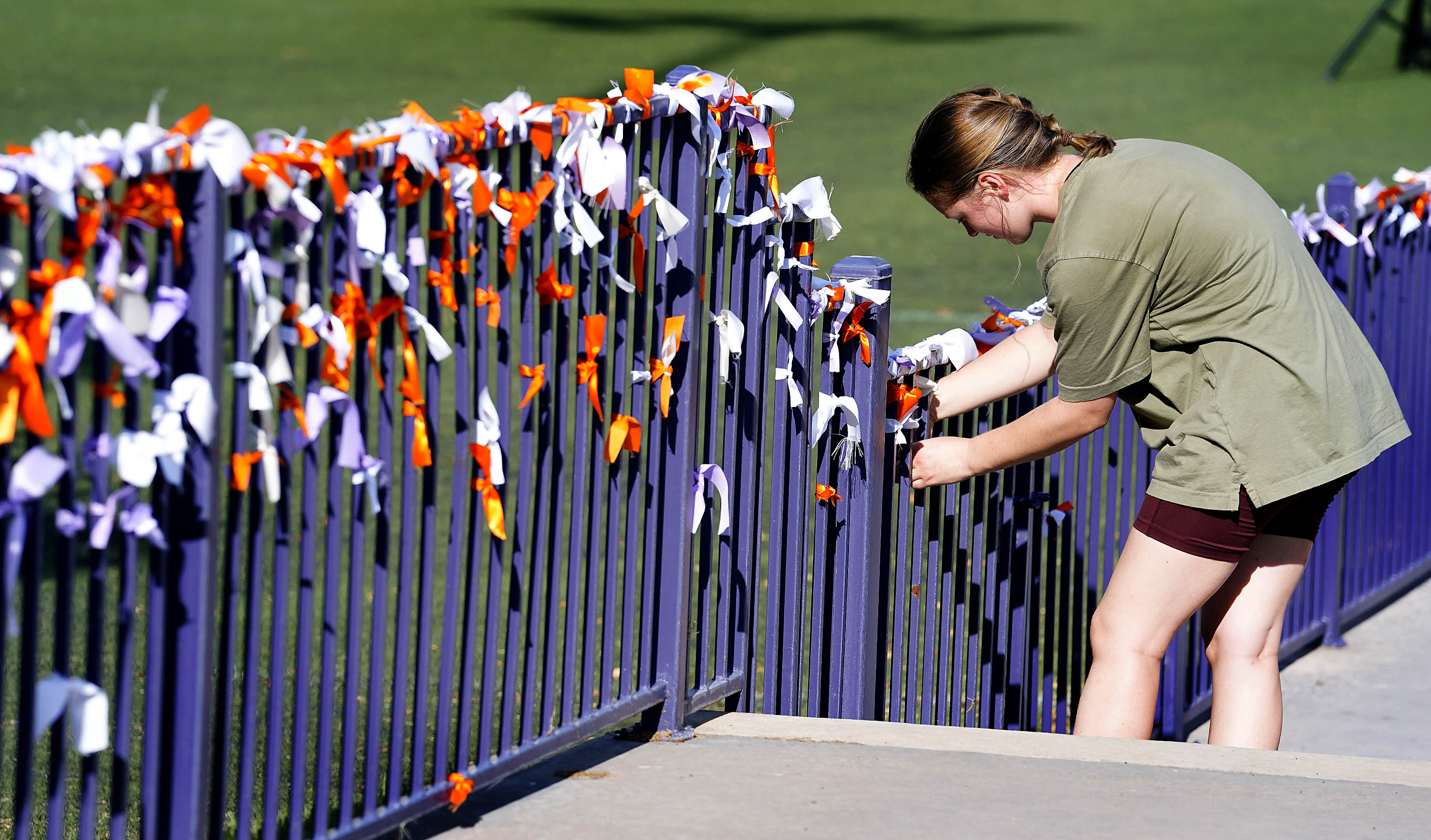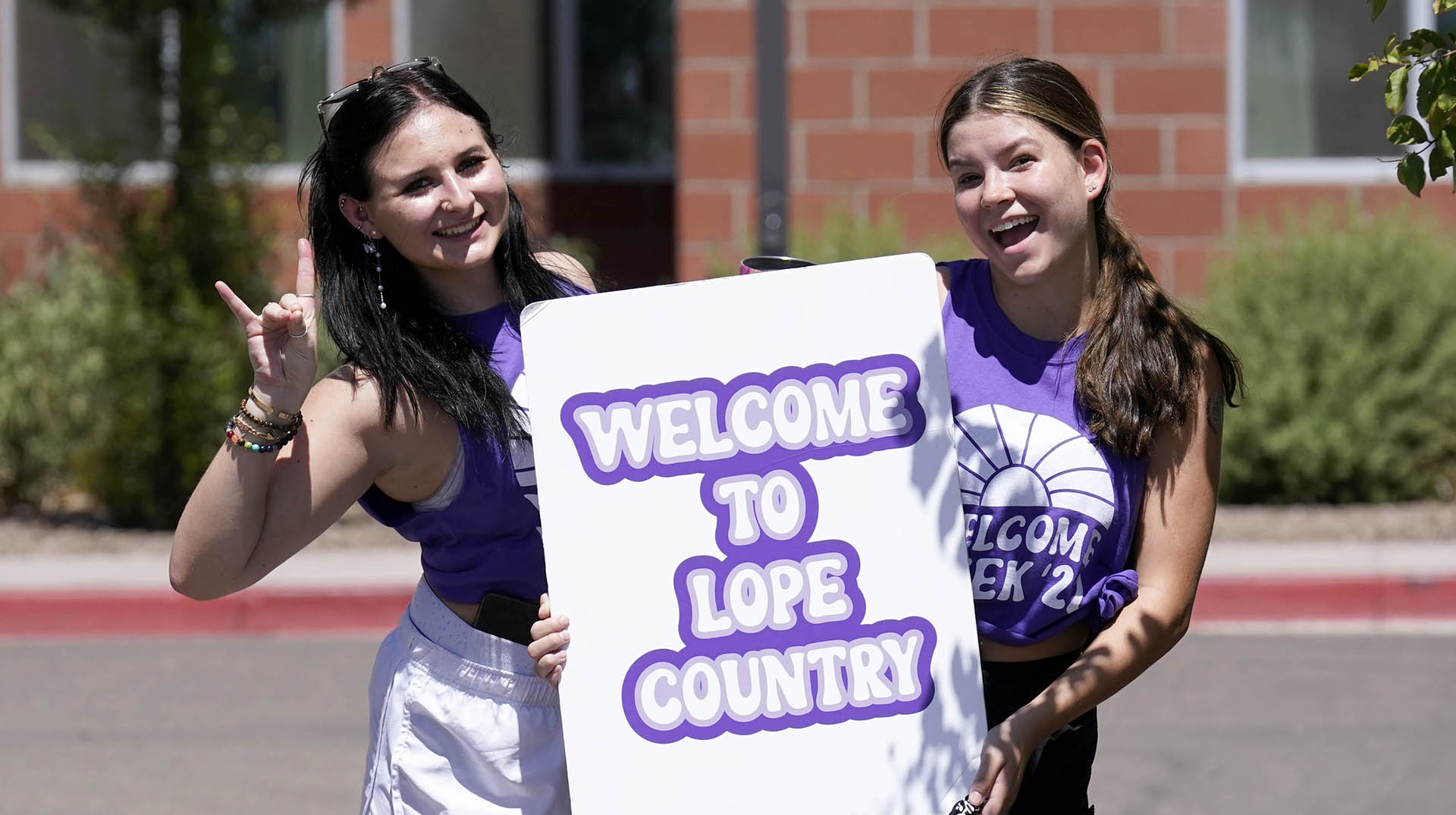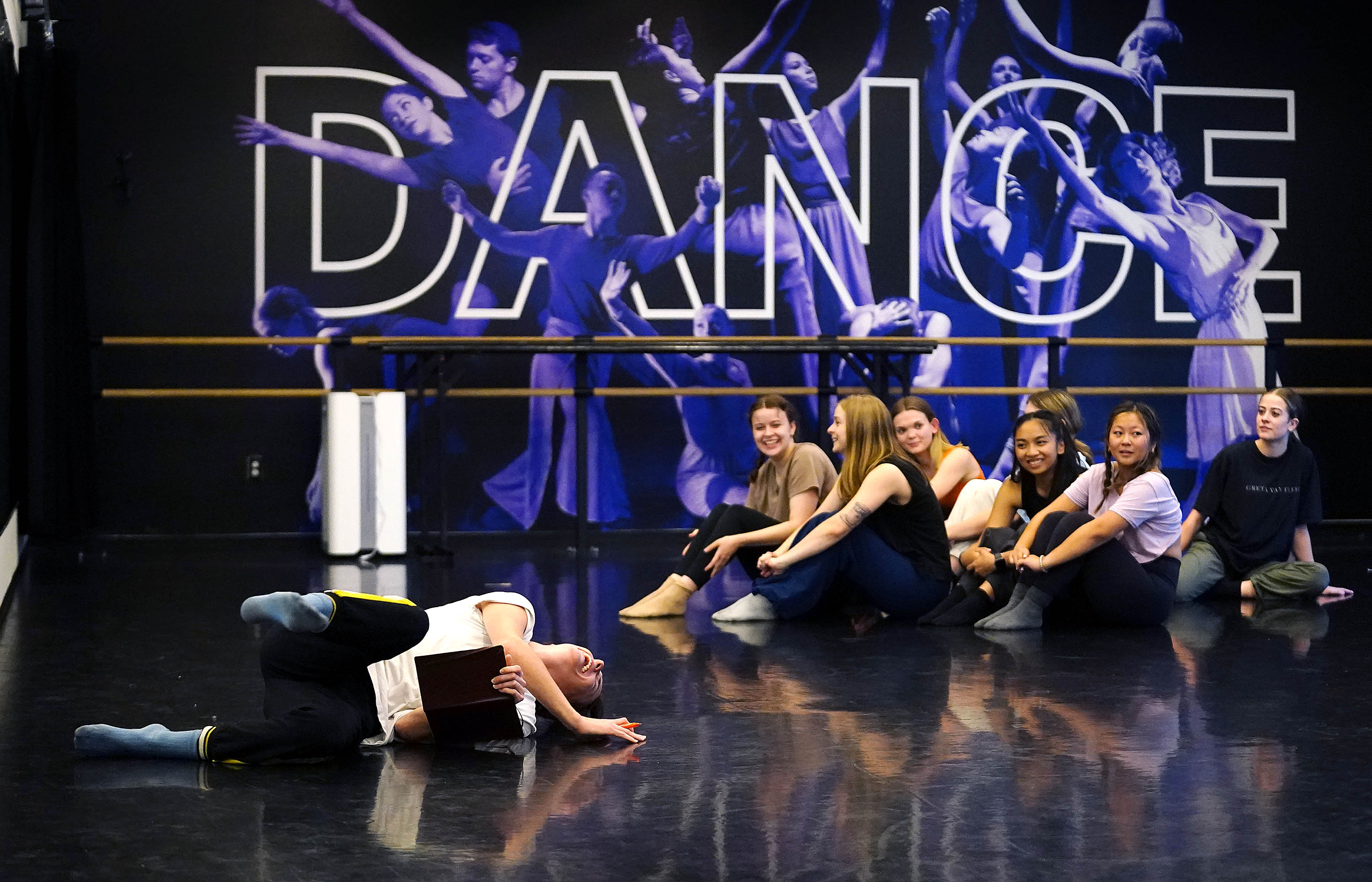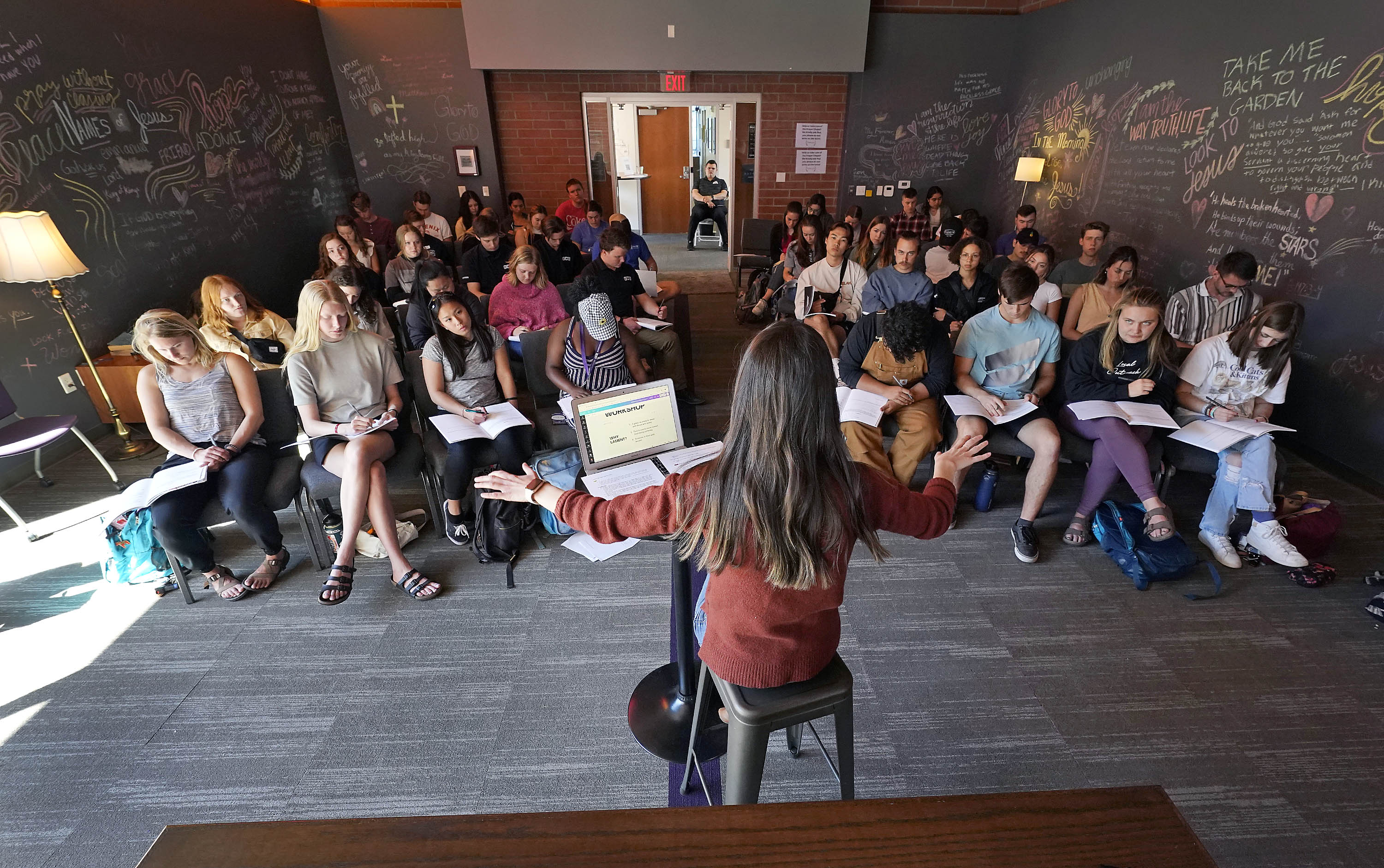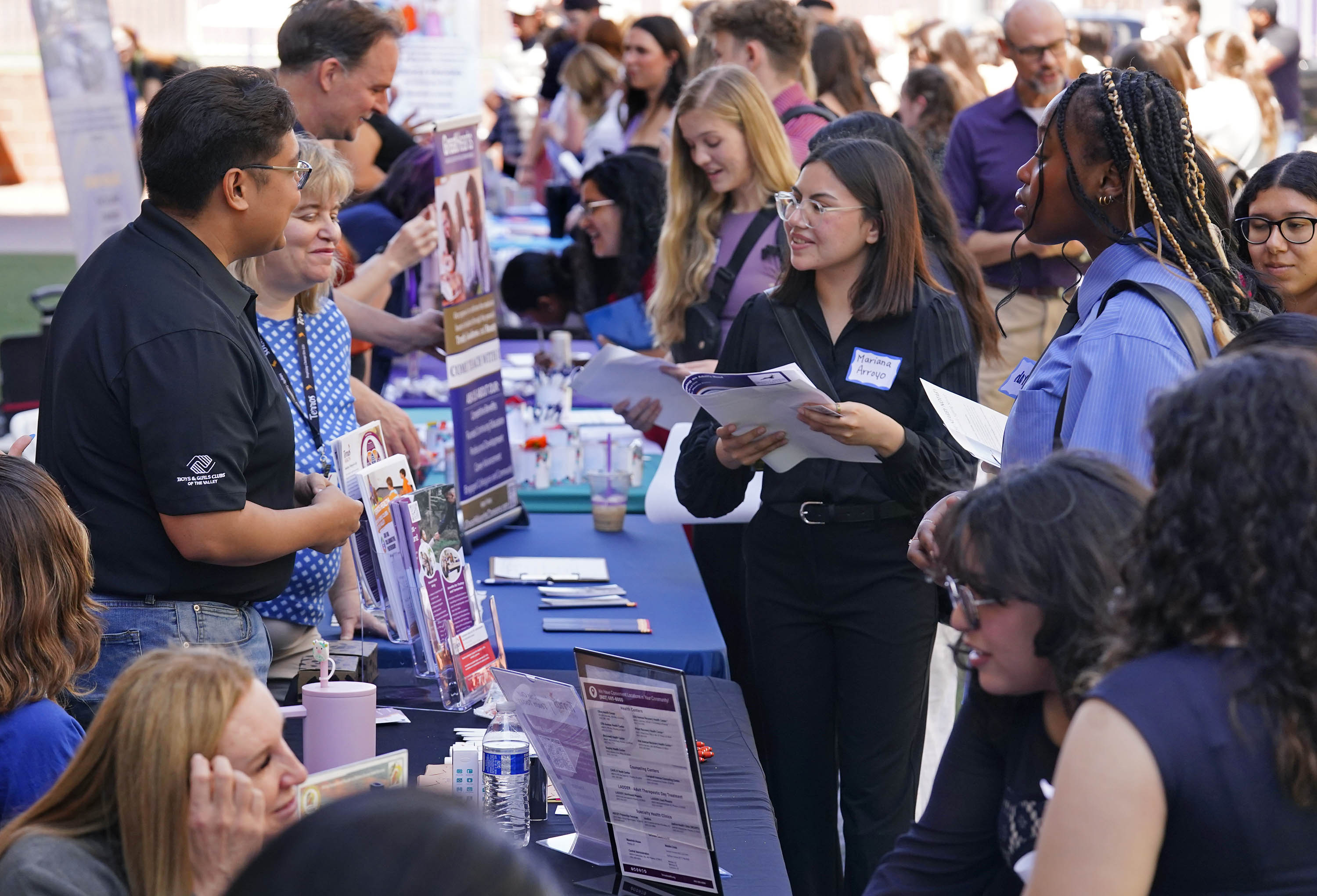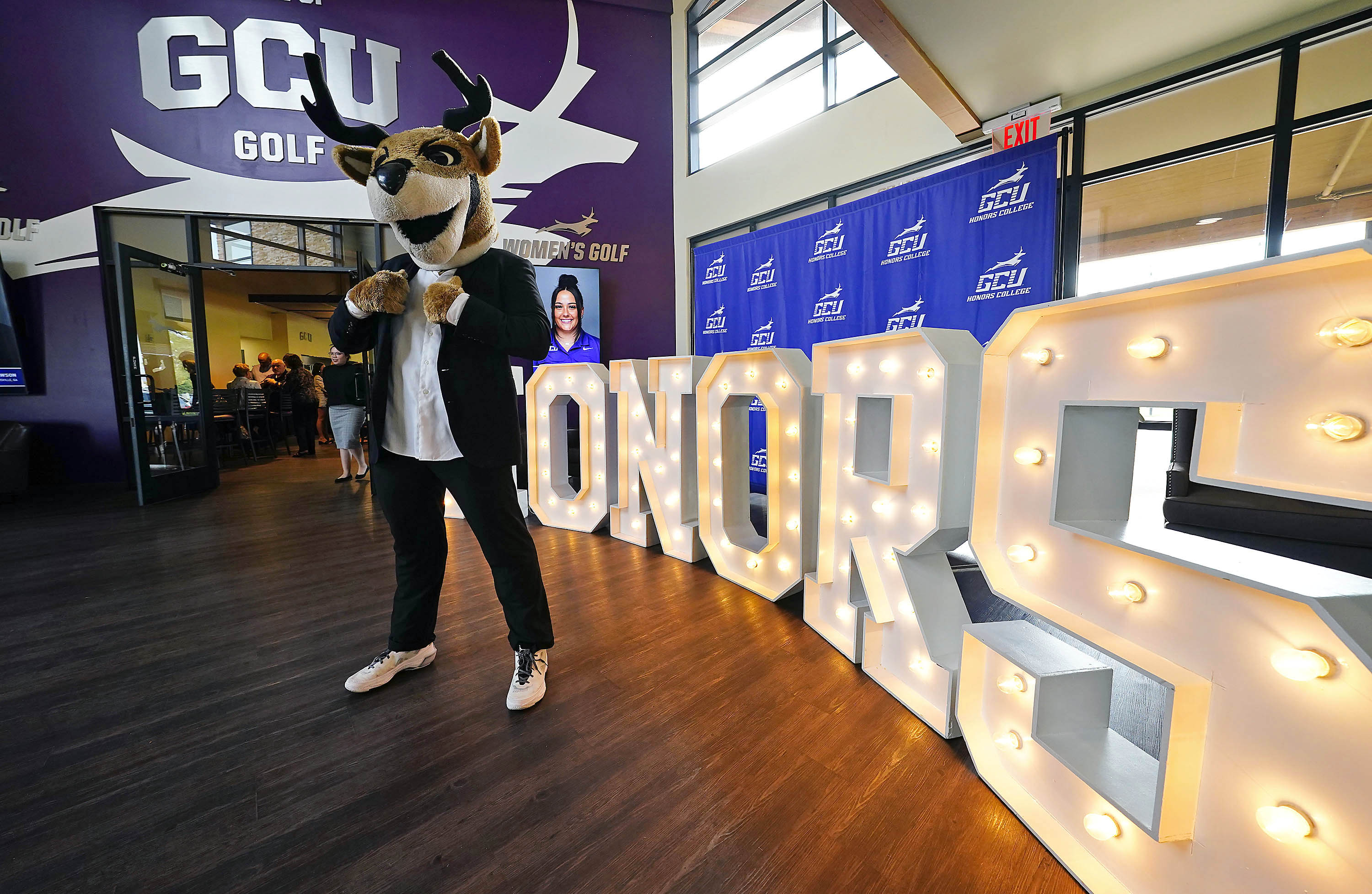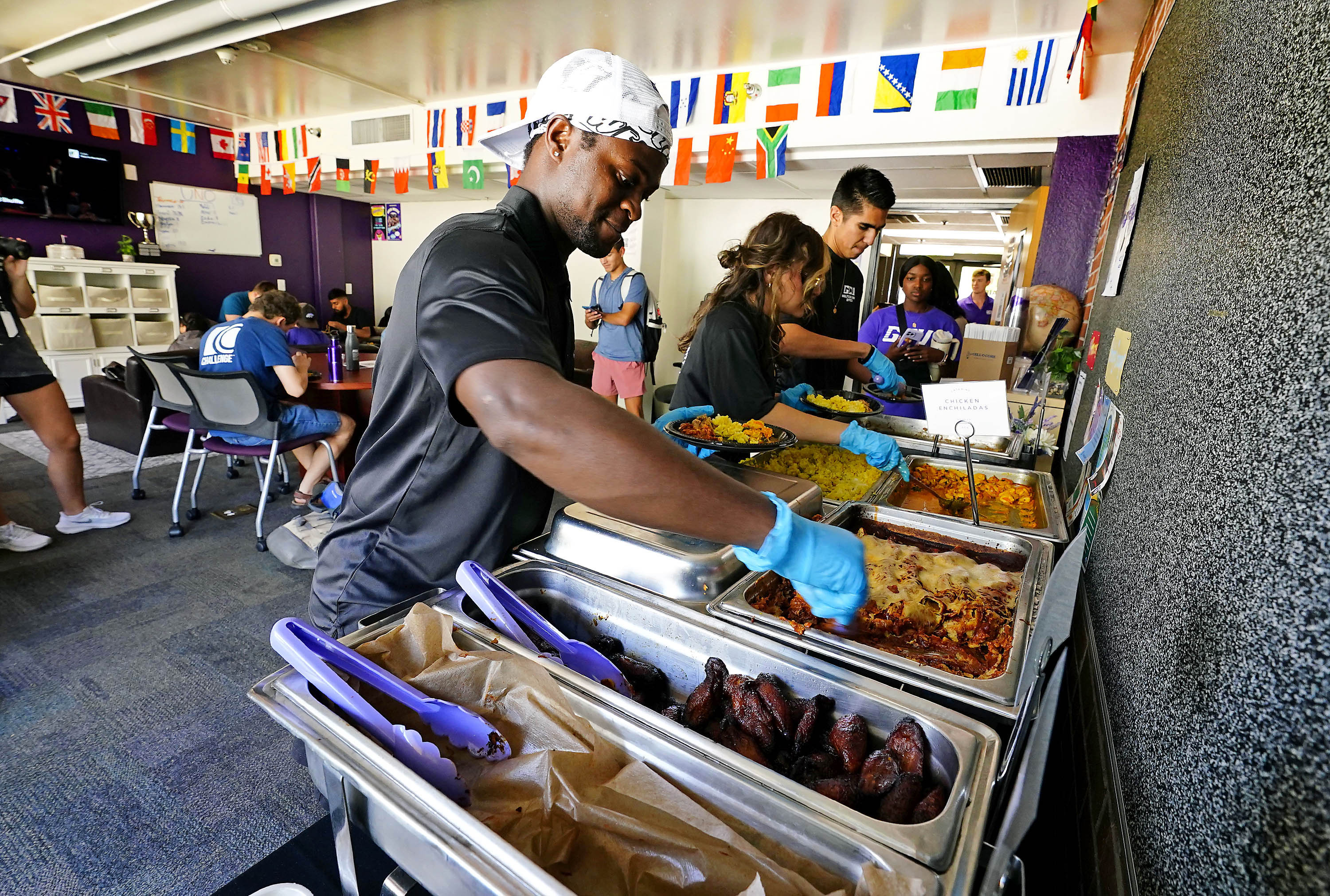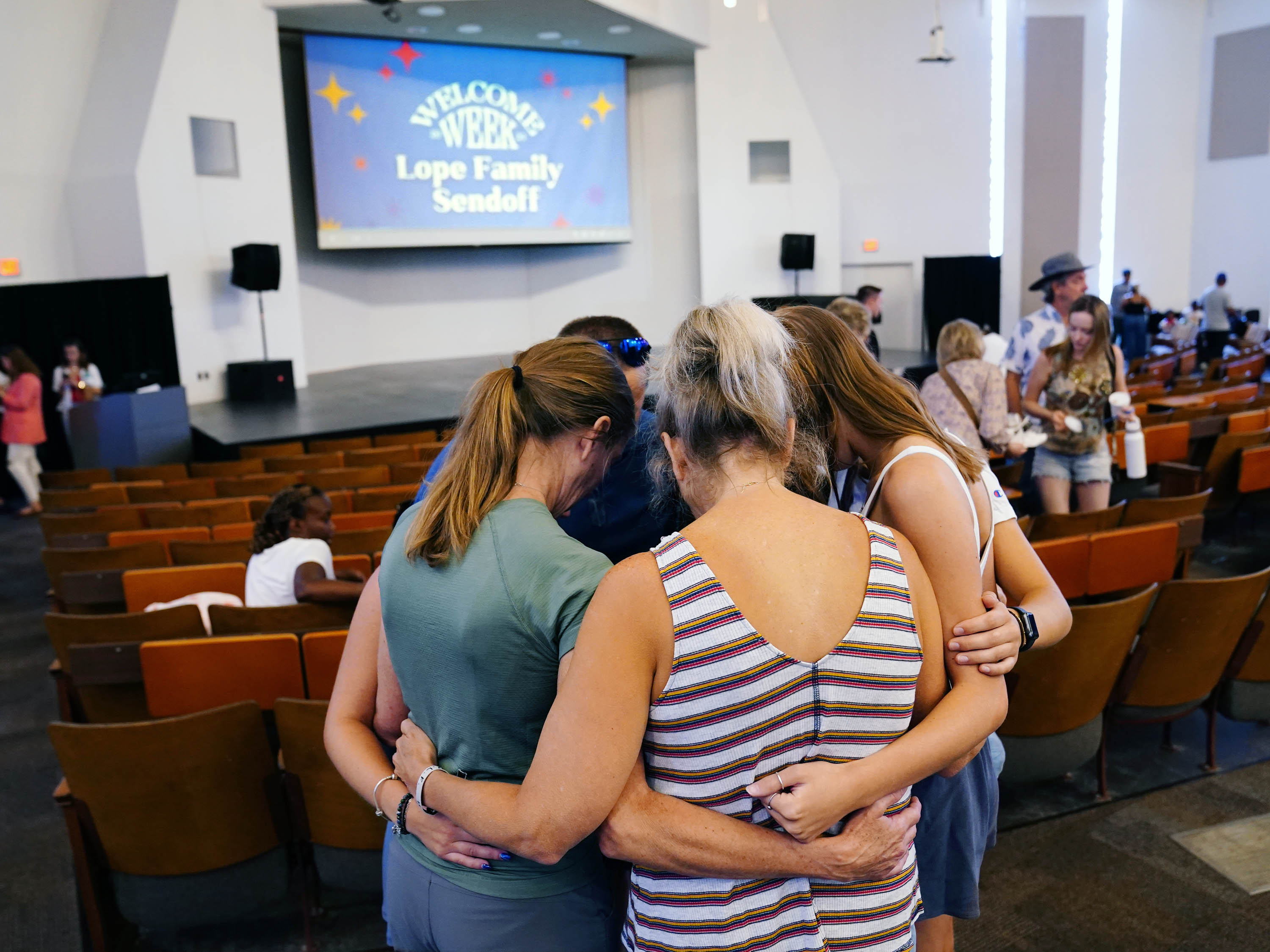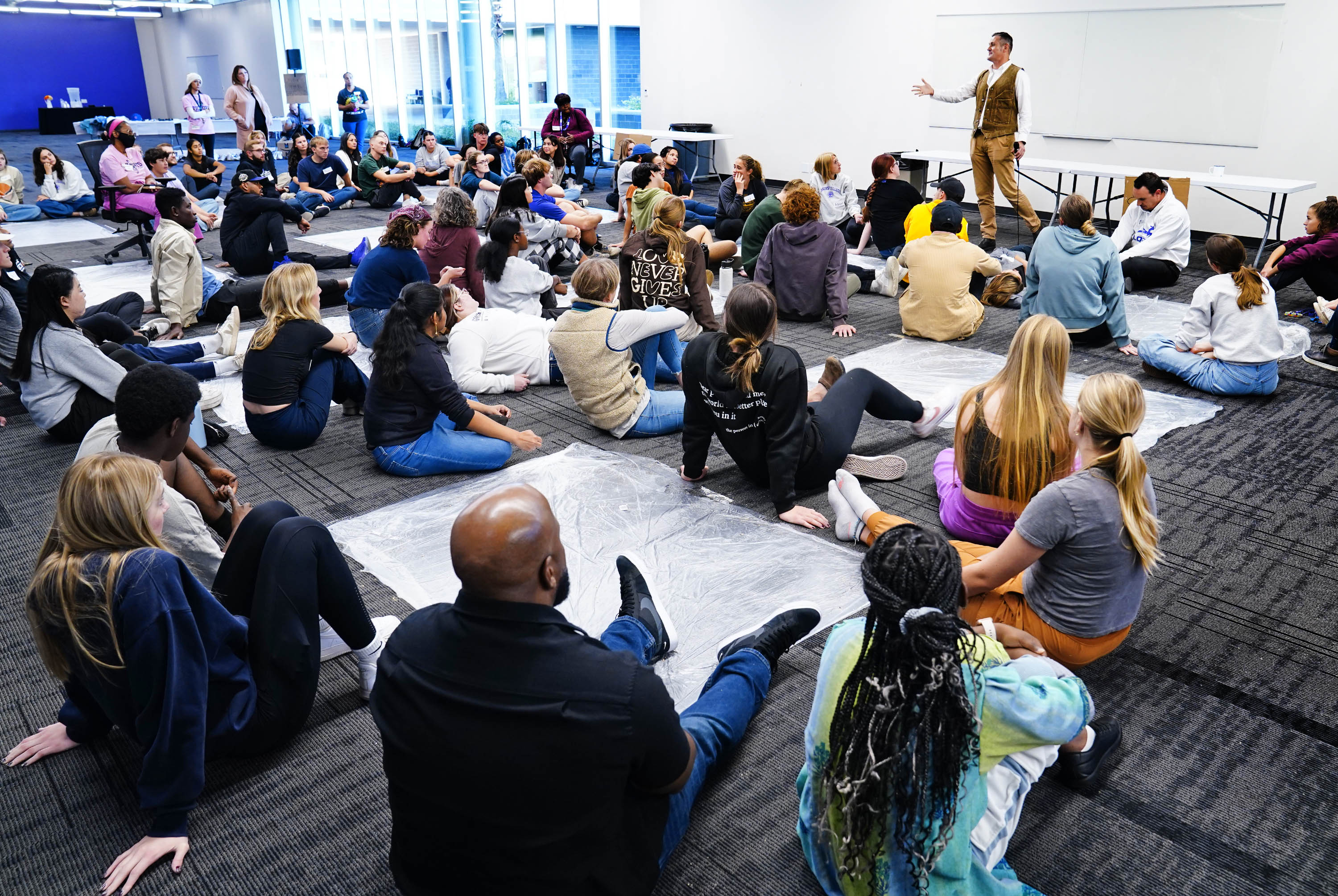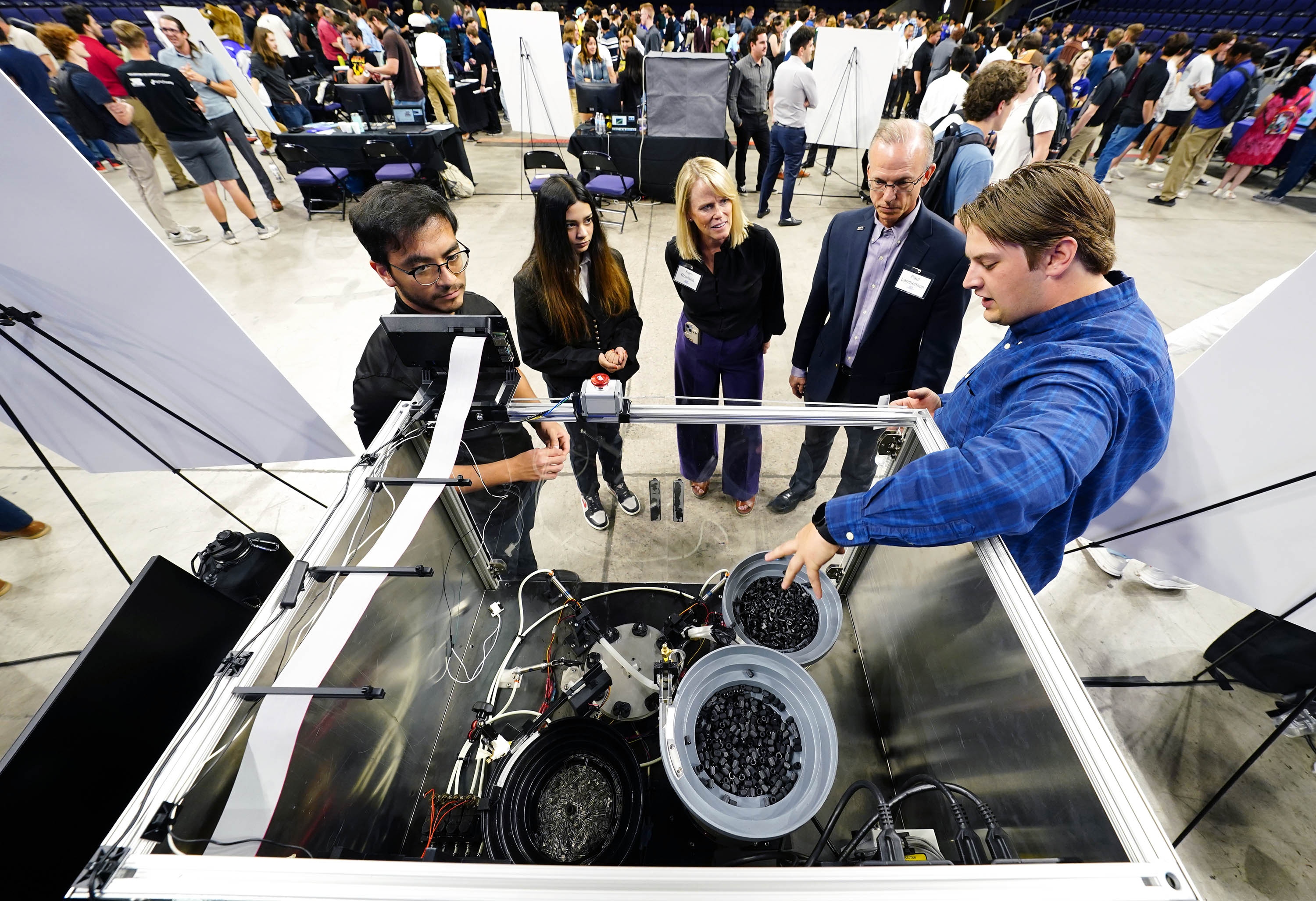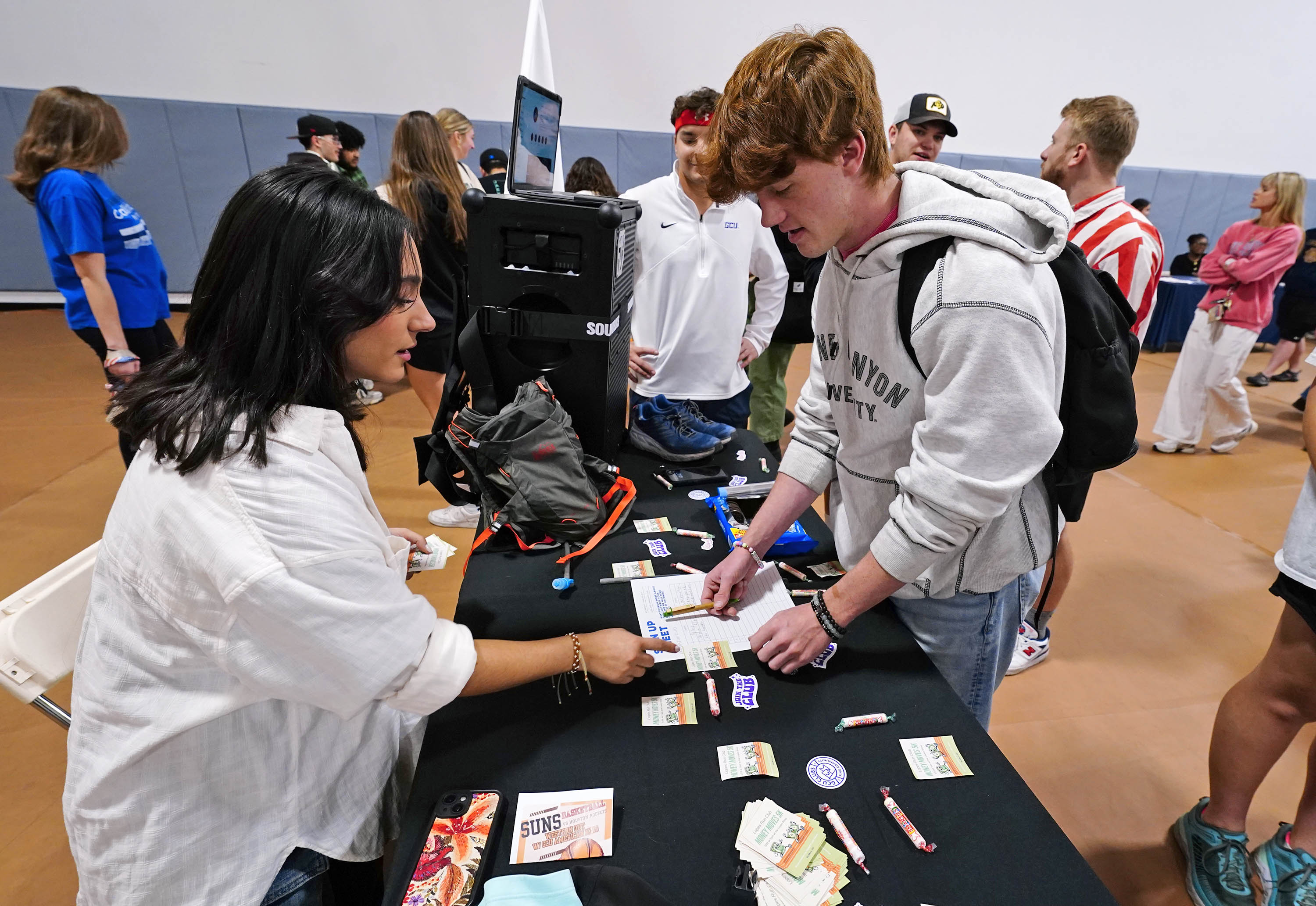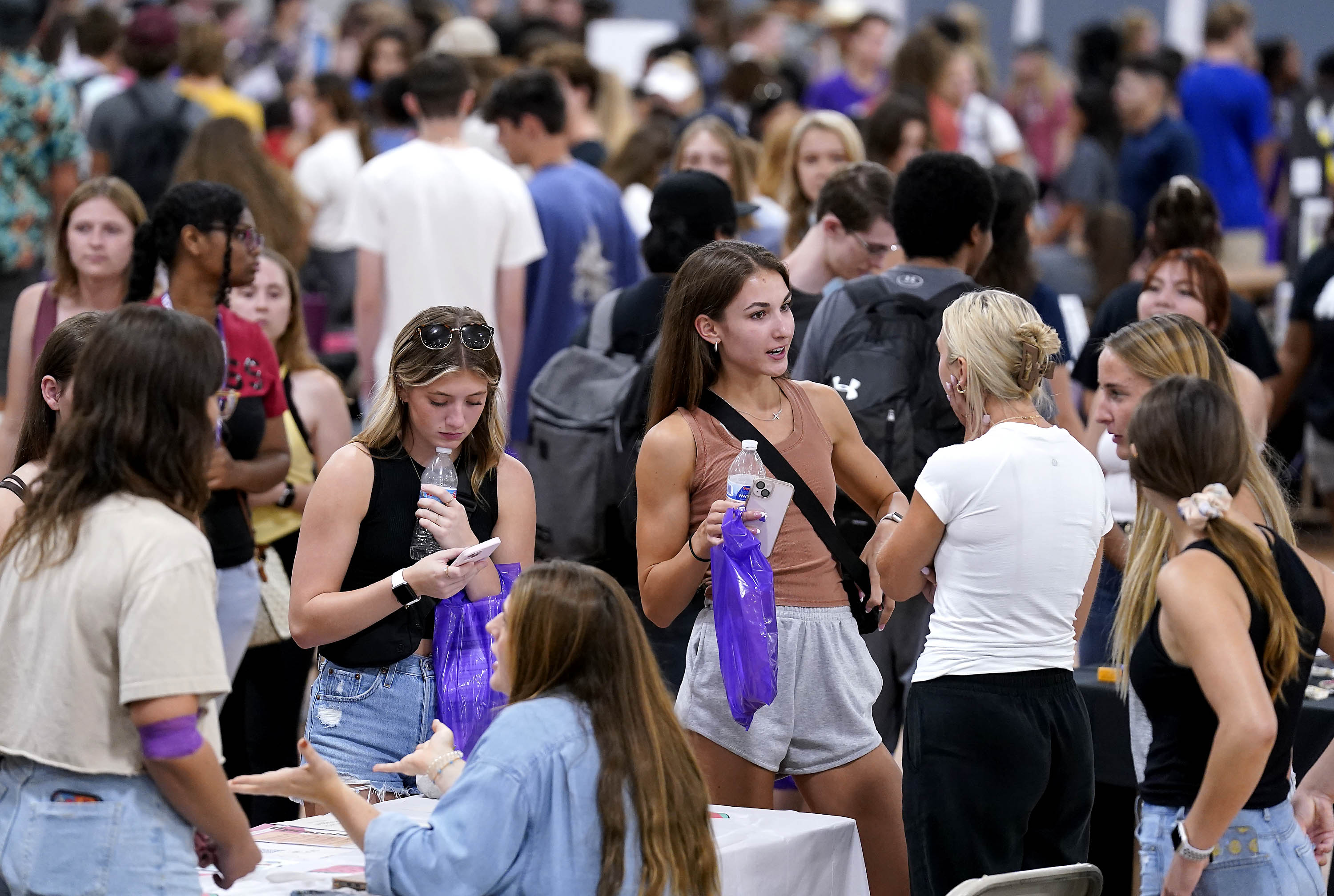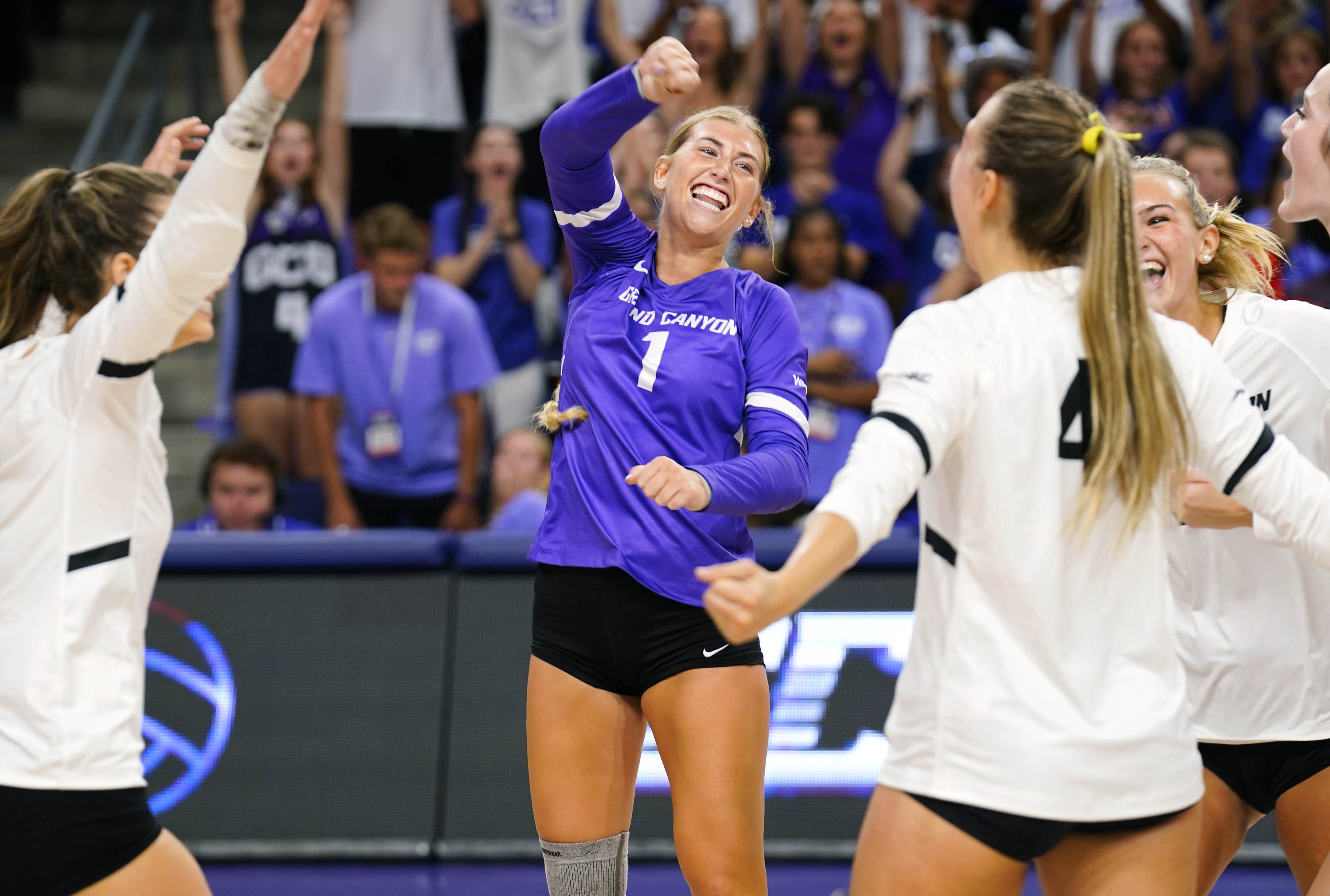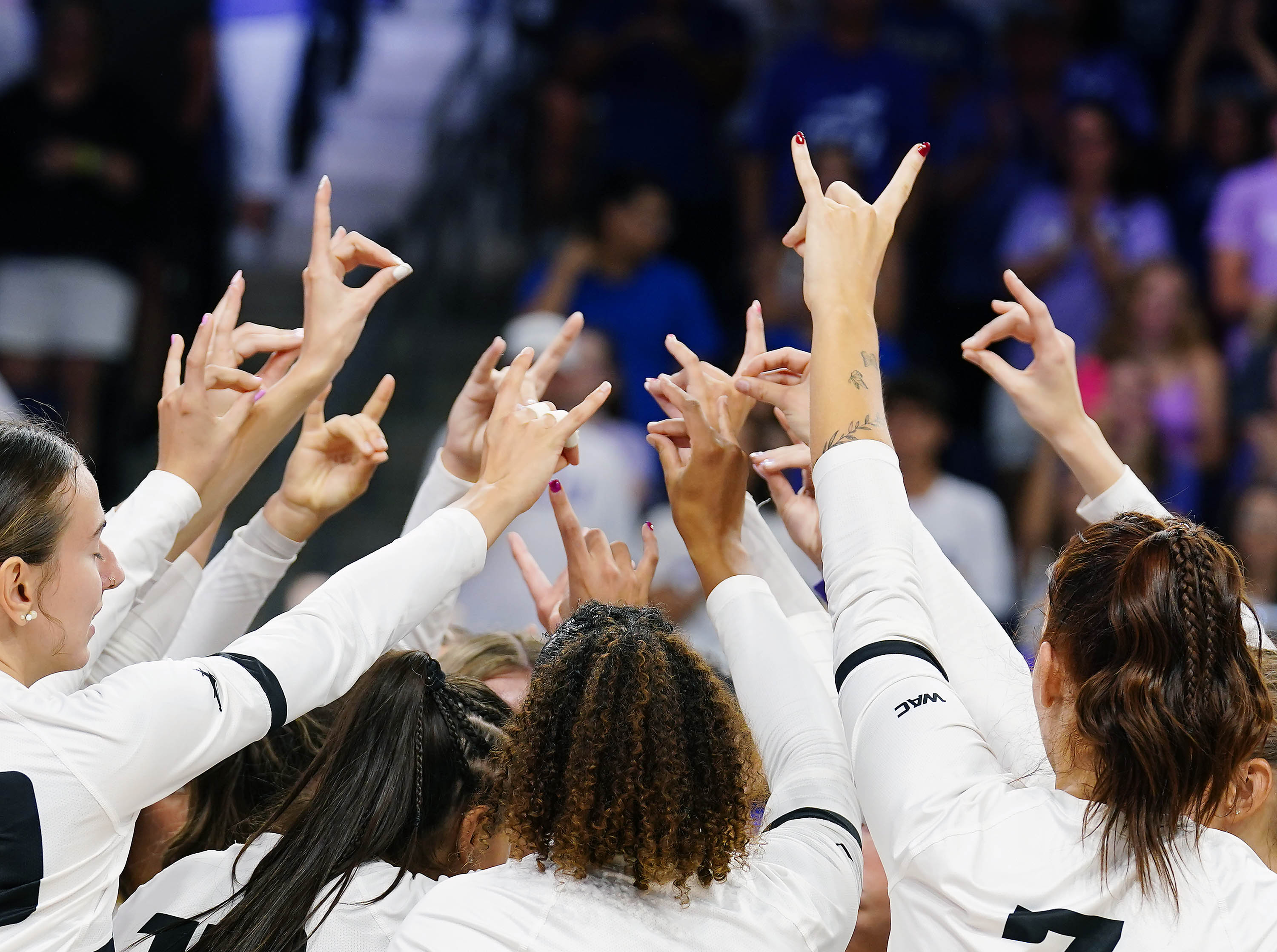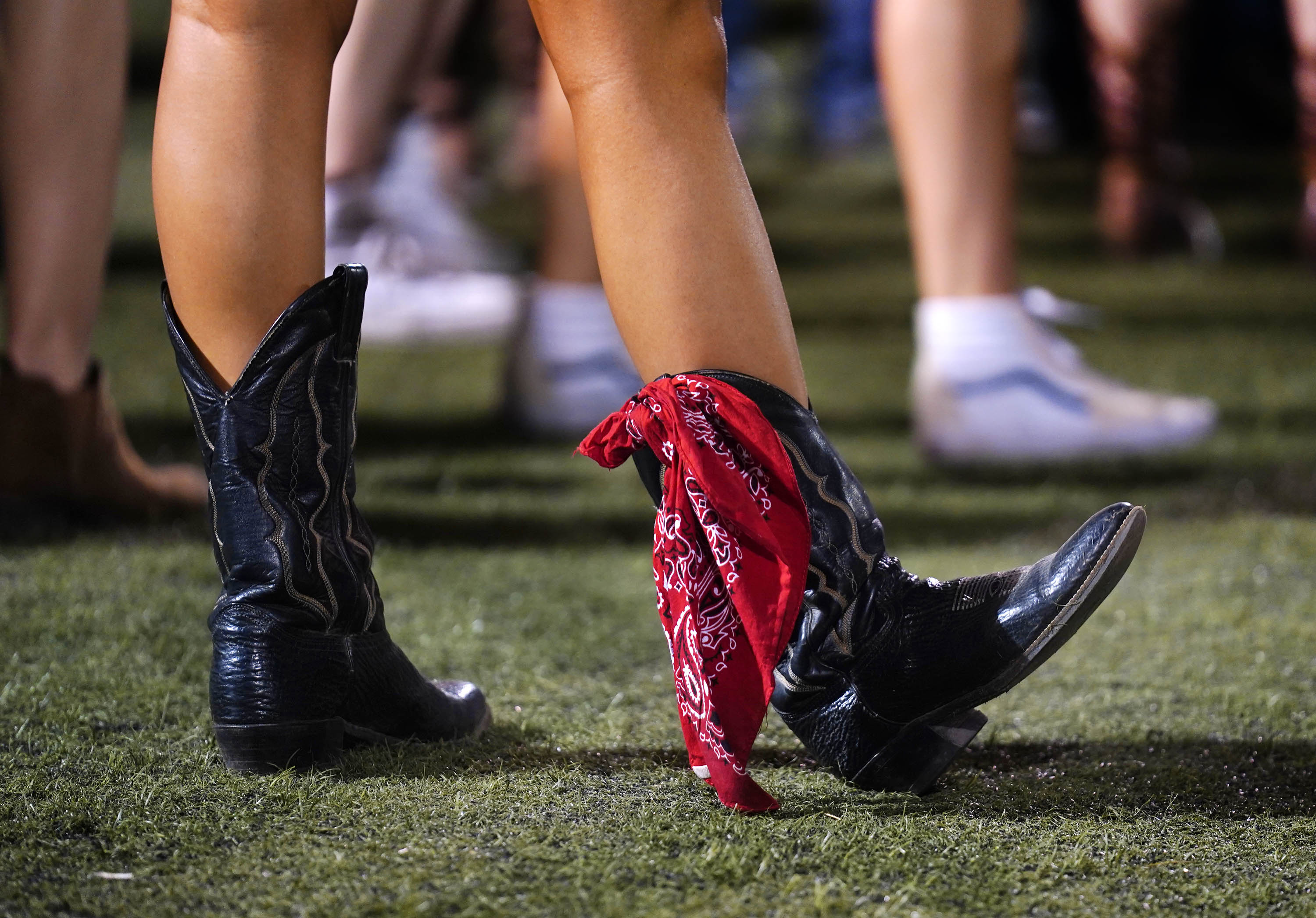
Editor’s note: This story is reprinted from the February issue of GCU Magazine. To view the digital version of the magazine, click here.
By Jeannette Cruz
GCU Magazine
The final lesson of the semester – never, ever stop trying to make a positive difference in people’s lives – came in the form of a parable.
The young students were told of a little boy who was grabbing sand-stranded starfish at the beach and tossing them back into the sea when an old man said, "Do you not realize that there are miles and miles of beach and starfish all along it? You can’t possibly make a difference." The boy bent down, picked up another starfish and threw it into the sea, saying, "It made a difference for that one!"
"What you do will make a ripple effect. Think about where you are now and multiply that by at least 25 years and 30 kids per year," Professor Jena Akard told the 50 Grand Canyon University early childhood students and aspiring teachers seated inside a classroom at Alfred F. Garcia Elementary School, where they had spent the fall semester in a GCU pilot program designed to make a difference in one of the state’s most impoverished school districts.
"Pick up the starfish," she urged.
Tucked in an industrial area filled with junkyards, homeless encampments, jail houses and businesses enclosed by barbed-wire fencing, the Murphy Elementary School District sits two miles southwest of the state Capitol in downtown Phoenix and serves the highest student concentration in the state even though its enrollment of 1,800 is down from a high of 2,500.

Last summer, more than a dozen parents staged protests to highlight longstanding issues – from large classroom sizes, to too many long-term substitutes, to poor English language arts and math scores and overall deplorable conditions. The district had been put on an improvement plan by the Department of Education as far back as 2012 in an effort to raise academic performance.
At Garcia, one of four elementary schools within the district, the veil of poverty can be felt even before entering the gated campus. It is a neighborhood that is so rough, students who live only blocks away are transported by bus.
Superintendent Jose Diaz, who came from a similar background as these students, shows up to work each day convinced that what he does matters and determined to create a safe and supportive environment to help his students thrive. He has spent 18 years in the district as a teacher, as principal of two schools and, since 2015, as its superintendent.
It was after he became superintendent that he first came in contact with GCU President Brian Mueller.
"I explained the need of our babies, the damage in our community, and President Mueller listened to me," Diaz said. "When you look around (at the changes being made), everything is because of President Mueller. He is a man of his word."
Creativity, purpose and freedom
GCU, which has been heavily involved in supporting K-12 education in the Alhambra School District and the West Valley, jumped at the chance to make a difference in the Murphy School District. It began last fall when a determined group of College of Education students spent three days a week at Garcia helping to teach kindergarten through third grade math, social studies, science and art.
According to Akard, who led the 15-week program, the exposure gives the Lopes’ aspiring teachers a deep understanding of teaching methods and a unique learning opportunity to create new possibilities inside and outside the classroom while working collaboratively in groups.

"You are working side by side with college students, and you see them learning and doing things that you frequently talk about and overcoming challenges – whether it’s curriculum, standards or simply touching a life," she said.
Although the program focuses on the design, content and process of teaching, the GCU students have fostered relationships among the school, families and community. Thanks to several projects the Lopes have begun at Garcia, Diaz and Akard believe GCU is a part of an immediate and lasting solution.
In a showcase called Art Masterpiece, the Lopes celebrated the artwork created by 450 students. Some created faux stained glass while others made impressionism art, pop art or origami. They also took turns throwing darts at paint-filled balloons to create a tall mosaic of splash patterns in the style of Jackson Pollock.
As she circulated the library, where all of the students’ artwork had been laid out on top of book shelves and taped along the walls, GCU senior Chandler Moore expressed her pride.
"They are so talented," she said of the Garcia Elementary students. "I think so often their classrooms are structured with the pressure of keeping up with school curriculum, and I just wanted my students to embrace a sense of freedom."
Garcia counselor Ilene Baker turned to Akard and described the event in one word: "Heartwarming."
Smiling, she recalled how the sound of joyful screaming and cheering had given her a boost on a regular day.
"I’ve been here a couple of years, and I haven’t had that privilege. It was great," she said.
In one second-grade classroom, a cacophony of excited chatter, laughter and hellos echoed off the walls as the children dashed in from recess to find a group of Lopes student teachers in their classroom. Minutes after, GCU junior Olivia Birky placed both hands over her eyes and counted to 10. Almost immediately, the room became still, and the next task for the youngsters was more intriguing. They took their chairs and huddled around Birky and her team to observe a scientific floating-and-sinking experiment.
Birky then got excited and, in her most enthusiastic voice, asked, "OK, who knows what a hypothesis is?"
Some made a few guesses, but most giggled and simply attempted to repeat the word:

HYYYYYPPOOOSISSSS …
They were listening. That’s a good thing. One by one, they took a sheet of paper and tried to guess the outcome of dropping several objects into a large plastic container filled with water.
When an apple was dropped into the water, a student shouted, "How can apples float? You didn’t tell me this!"
Akard told of Maslow’s hierarchy of needs, a theory that aims to describe human motivation and why it is difficult for children whose basic needs aren’t being met to reach their dreams or self-actualization.
The correlation between poverty and academic struggle sounds obvious, but at Garcia, the connection goes hand in hand. Almost all of the students there rely on a free or reduced-price lunch.
To help, GCU students Rebecca Cuthbertson and Kelsey Chino contacted St. Mary’s Food Bank and partnered with its Mobile Pantry, which distributes more than 6,000 pounds of food each month. They then created flyers for the students to take home to their families and provided families in the local community free food.
Cuthbertson said she was surprised to learn that most of the families were unaware of the Mobile Pantry. She then told the story of a first-grade student who consistently acted out in the classroom.
"At one point the student told me that I was a terrible teacher, and after talking to Ms. Akard and my peers, I realized that this was a student who would require more one-on-one support," she said.
Cuthbertson took Akard’s advice and allowed the student to stand in her classroom. The result was gratifying. "He was so excited when he was able to write an entire sentence all by himself," said Cuthbertson. "He was so proud of himself, and that was so cool to see."
Along with emotional support, thousands of students also depended on the Lopes to step up to collect books for them to add to their library. Through many forms of advertising and community donations, Give the Gift of Reading for the Holidays collected 510 books – the last book was written and donated by Dr. Kimberly LaPrade, Dean of the College of Education.
"Schools and districts go through many different challenges," Akard said. "I know that, when I was teacher, having an extra set of hands and eyes and ears in the classroom was so helpful. Our Lopes are making a difference by creating fun and excitement."
It helps Garcia teachers, too
For Yanitza Villa, a third-grade teacher at Garcia who once was a student of Akard, the arrival of the Lopes came as a sweet surprise.
"It’s almost like I am giving back to GCU, especially to Ms. Akard, who taught me so much," she said. "They keep me refreshed because it is so easy to get into a spiral of tests and standards, but they level me down and remind me that it is OK to have fun once in a while. They bring the art of education back into the classroom when I feel like I’ve lost it."
She shared how in one unit her students learned about the lack of books around the world. In the lesson, the Lopes challenged them to come up with ways to provide books for those children.
"They had these amazing ideas, like delivering books with blimps, airplanes and helicopters," Villa said. "It was so creative, and then they had the materials to build them."
Kindergarten teacher Erika Mancilla loved how her youngsters reacted to having the Lopes enter their classroom.
"My kids were so funny," Mancilla said. "Every time the Lopes walked in they would shout out, 'Aaaagaaaiiinnn!' I could see how connected they were. They liked knowing that it was their time with them. They love that consistency."
Mancilla stressed how inconsistency is hurting student learning, especially in schools across the Valley grappling with teacher shortages.
"There are so many components to this issue – lots of politics and lack of funding – that has created a snowball effect, so what we are getting into is an increase in substitute teachers," she said.
"I think this (GCU-Murphy) collaboration is the answer. When you have the opportunity to be exposed to a classroom early off in your college program, that is the best time to realize if it is something that you want to commit to. And the Lopes have that desire to be here because their commitment shows."
Garcia Principal Takesha Turner is thankful for the GCU program, which she called a "delightful experience."
"It’s just a friendly environment every day, and the Lopes have been very powerful in the positive attitude that they bring," she said. "When it comes to education, we are very passionate about what we do, and one of the things that I have seen in the Lopes is how much they care. They are ready and willing to be in it for the long haul."
Tough upbringing
Diaz’s experience makes him a perfect leader because the stories of many of his students are comparable to his own.
Growing up poor in Mexico, Diaz watched as his young, widowed mother struggled on his grandfather’s farm, where they had no water or electricity. Determined to get an education, Diaz made a three-mile journey by foot to school and back – on an empty stomach.

"They never gave us lunch or anything," said Diaz. "You walked and did your best."
When he completed sixth grade, Diaz decided to leave school to begin working in the fields, as most children his age did. But his teacher that year, Mrs. Juanita, traveled all the way across town to beg Diaz’s grandfather to let young Jose continue his education.
Diaz became the first member of his family to graduate from middle school and high school, he put himself through college by selling hot dogs, and at age 25 he graduated as an engineer.
Diaz never would have guessed he would become an educator. Unlike most teachers who were called into the profession early in their lives, Diaz got a taste of the profession by happenstance.
He was working in construction, cycling to work, studying English and even doing some modeling when he was offered the opportunity to be a substitute math teacher at a high school in Avondale, Ariz.
"I left everything to do it full-time, and I didn’t care about anything else," said Diaz. "They put me with people who were coming from other countries who identified as minorities, and at one point I was teaching English mathematics to almost 13 different languages. I saw their need, and we immediately connected."
He broke down in tears as he talked of his "babies" and the hurdles the Murphy district has faced.
"Our babies deserve the best and first-class education just like anyone else," he said. "They are my life because I also am one of them."
Just the beginning
At GCU, there is an everyday demand to deliver hope. At the first Chapel service in January, Mueller announced the next phase of the GCU-Murphy partnership, which will feature 20 college students working with 10 children apiece after school in a setup similar to the University’s Learning Lounge. GCU also will provide a hot meal, just as it does when area students come to campus for help in the Lounge.
After the service, President Mueller found eager students already lined up to volunteer and seek more information.
Akard said although the project was part of her 10-year plan, she became fully inspired to serve students with the greatest needs after one classroom discussion with her GCU students two years ago.
"They said, ‘Ms. Akard, c’mon, we need to go to a school together and teach them,' and then a door opened with Murphy," she said. The joke was that she was going to fail her students to keep them again next semester. This spring, more than 50 early childhood education students already have signed up for the learning experience.
Akard told of how one Garcia student ran up to her to say that he was moving to Texas, and he wanted the GCU students to come with him. He started to cry.
"So at this point in time he wanted us to have some satellite in Texas, and I gave him my business card," Akard said.
"I’ve been at GCU for four years, and my Lopes are amazing… You’ll see the Garcia students walking around screaming, 'You’re GCU! You’re GCU!' … I am so proud."
These are the first starfish. There will be many more to save.
● Tim Jones, GCU's Co-Director of Diversity, shares his memories of attending Garcia Elementary. To view the story, click here.
Contact Jeannette Cruz at (602) 639-6631 or jeannette.cruz@gcu.edu.



